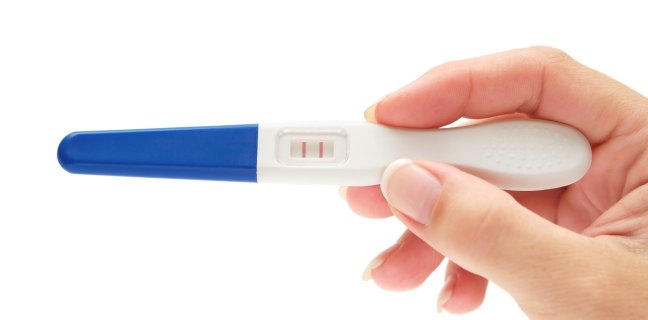One significant development in assisted reproductive technology (ART) in the last 25 years is our ability to remove cells from a developing embryo and perform genetic testing. The procedure is termed preimplantation genetic screening or preimplantation genetic diagnosis depending on its application.
As technology has improved we have seen the use of PGS and PGD in IVF rise, with the latest Australia and New Zealand Assisted Reproductive Treatment Database (ANZARD) reporting a 20% increase.

What is Preimplantation genetic screening?
Preimplantation genetic screening (PGS) or ‘embryo screening’ is a method where embryos from presumed chromosomally normal genetic parents are screened for abnormalities. It involves screening all 24 chromosomes in a developing embryo to select the embryo/s without any chromosomal errors that is most likely to result in an ongoing pregnancy.
PGS is an evolving technique that is now recognised more arguably as a way to improve pregnancy rates in women experiencing repeated IVF failure and recurrent miscarriage.
What is Preimplantation genetic diagnosis?
At this stage of medical science we are not able to routinely ‘screen’ embryos for faults in the 20,000 or so genes located on our 23 pairs of chromosomes. Therefore we cannot tell if an embryo is destined to develop a particular genetically inherited condition unless we are specifically looking for it. This is known as Preimplantation genetic diagnosis - PGD for short. Some couples may require this when there is a known genetic condition that runs in their family, such as Huntington’s disease, Cystic fibrosis, Thalassaemia and Fragile-X.
How is PGS & PGD performed?
Both PGS & PGD involve taking cells from a developing embryo usually at the day 5 (blastocyst) stage. This step is called an embryo biopsy. The biopsied cells are then tested to assess the embryo and health of any potential baby. The embryos are frozen whilst we wait for the results. The embryo then determined to either have no chromosomal errors (PGS) or be of low risk for the genetic condition we are testing for (PGD) is transferred back into the woman’s uterus.
Embryo selection in an IVF cycle
During an IVF cycle, selecting an embryo for transfer has traditionally been based on appearance alone, called morphology. A ranking of which embryo is likely to result in a baby, based on an appropriate number of cell divisions at a given time is established. Then, each month, the next best embryo is transferred into the woman’s uterus. Unfortunately, many embryos do not result in a baby. The reasons for this are mostly related to genetic factors of the embryo and not the uterine environment.
What causes an embryo transfer to fail?
There are many reasons the transfer of an embryo does not lead to an ongoing pregnancy. An important requirement for an embryo is that it is genetically normal and has 23 pairs of chromosomes, which are labelled 1 to 22. There are also 2 sex chromosomes, XX (female) or XY (male).
Sometimes an embryo can have an extra chromosome, such as three copies of chromosome 21, which we call trisomy 21. This embryo would be destined to have Down syndrome. If an embryo is missing a chromosome, for example chromosome 4, we call this monosomy 4. These major structural errors, also called aneuploidy, commonly lead to a negative pregnancy test or result in miscarriage.
How common is it for an embryo to be genetically abnormal?
We know that approximately 30% of embryos from women aged 30 have genetic errors and this rises to 80% of their embryos at the age of 40. The reason for this is due to the ageing process that inevitably occurs in the egg.
Women are born with all the eggs they will ever have and as a woman’s eggs get older, these errors become more frequent. Unfortunately, even the best embryos based on their appearance can have these errors. The result is that most of these embryos when transferred will result in a negative pregnancy test or miscarriage. This is largely the reason that the chance of pregnancy declines as women get older. The chance of miscarriage also increases for the same reason. At 30 years, 1 in 6 pregnancies end in miscarriage. At 40 years, this has risen to 1 in 3 pregnancies.
How can embryo screening increase pregnancy rates?
When we identify and exclude abnormal embryos from transfer, the likelihood is that the time to achieve an ongoing pregnancy will be reduced. Fewer procedures and less dreaded two week waits make IVF treatment easier.
It’s important to remember that transferring an embryo without genetic errors does not guarantee a pregnancy. An embryo must also be normal in other ways that we cannot test for.
Who could benefit from embryo screening?
Women recognised to benefit from embryo screening are those experiencing recurrent miscarriage or implantation failure. There is also increasing evidence to support the use of embryo screening for women 38 years and older.
Since the embryo screening process involves comparing embryos to see which one is more likely to lead to a successful pregnancy, it is more appropriate for couples that have more than two day five (blastocyst) embryos.
What can I do next?
If you have questions about PGS or PGD, consult a fertility specialist. They will be able to advise whether the technique is appropriate for your situation and answer any questions you might have.
Read more about PGS at Virtus Health: Victoria» New South Wales» Queensland» Singapore»


